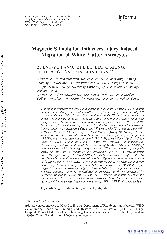摘要
This study investigates the effects and underlying mechanism of magnetic stimulation on injury-induced migration of white matter astrocytes. Twenty-four adult healthy SD rats were selected to inject 0.5 ml of 1% ethidium bromide (EB) in PBS into the dorsal spinal cord funiculus on the left side at the T10-11 level to make located spinal cord injury models. Then they were randomly divided into four groups (A, B, C, and D). Groups A, B, C, and D were exposed to 1 Hz pulsed magnetic stimulation underwent 5-min sessions on 14 consecutive days at the following levels: 0T (Group A) 1.9 x 40% T (Group B); 1.9 x 80% T (Group C); 1.9 x 100% T (Group D). On day 14 after stimulation, the rats were killed and the expression of glial fibrillary acidic protein (GFAP), microtubule associated protein-2 (MAP-2), extracellular signal-regulated kinase1/2 (ERK1/2), and the volume of holes were detected with immunohisto-chemistry. Quantitative analysis of the expression of GFAP, MAP-2, and ERK1/2 were performed with the image analysis system. With the increase of magnetic stimulation intensity, the volume of hole decreased at day 14 (P < 0.05). In lesion areas, the expression of GFAP and ERK1/2 could be seen, while that of MAP-2 did not change before and after magnetic stimulation. Significant difference was revealed in the expression of GFAP, ERK1/2 among the four groups. It was significantly higher in the magnetic stimulation groups than that in the control group (P < 0.05). After magnetic stimulation, astrocytes migrated into the hole. U0126, a potent and selective MEK1/2 inhibitor, inhibited up-regulation of pERK1/2 which was stimulated by magnetic stimulation. These data indicate that magnetic stimulation increases the migratory capacity of reactive white matter astrocytes in the injured center nervous system, which may be associated with activation of MEK1,2/ERK mitogenic pathway.
- 出版日期2010
- 单位华中科技大学
